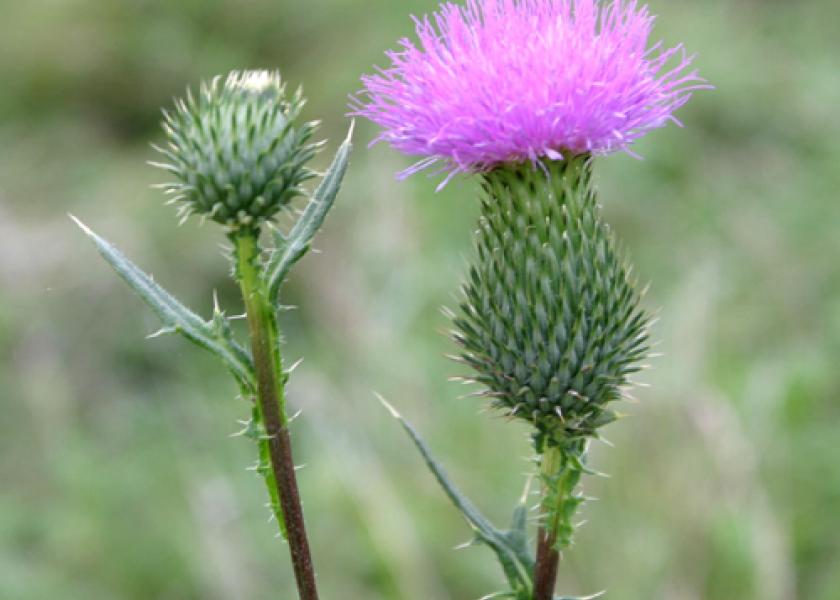Target Noxious Weeds This Fall

Consider spraying your noxious weeds this fall.
By: Mark Rosenberg, Agronomy - Weeds Field Specialist, SDSU Extension
If they have not been treated yet, now is the time to spray those perennial weeds we battle every year. Fall is an excellent time to treat Canada thistle, leafy spurge, and other noxious weeds around the farm and home. Fall control of annual weeds like crabgrass, foxtail, knotweed or purslane is unnecessary and wasteful. These weeds only live for one summer, and naturally die in fall so control is unnecessary. Before applying any herbicide, know what weeds you are trying to control. Your county Weed and Pest Supervisor or the SDSU Extension Weed Program can help with identification.
Fall is the best time to control perennial weeds, because they begin moving carbohydrates produced by photosynthesis to the roots for winter storage instead of to upper plant parts for continued growth. If herbicides are applied at this time, the chemicals are transported to the roots along with the carbohydrates, killing the entire plant instead of just the parts above the soil surface. This process works in the opposite direction in spring and summer, when carbohydrates produced are normally sent to the leaves and upper parts of the plant. As a result, herbicide applications made during spring and summer are often less effective than fall applications.
If we have the ideal combination of weather and timing the control results can be very good. It doesn't happen every time but here are some things to consider when you go after those weed patches.
For the best results, treatments should be applied to new shoots actively growing from underground parts. Treating old leaves or stems proves to be less effective. Plan to spray when the growth is 6 to 8 inches. The more new green growth present at the time of treatment improves the chances for good results.
Don't expect 100% control with one herbicide application when targeting difficult weeds. Two or three herbicide applications, 2-3 weeks apart will usually be necessary for control. After making the herbicide application, don't mow for 2-3 days to allow the plants to take in the chemical.
Herbicide spot treatment, or spraying individual weeds, saves money on chemicals when only a few weeds are scattered throughout the pasture, lawn or road ditch. Ready-to-use liquid products provide better coverage for spot spraying.
Many products are available for broadleaf perennial weed control, and may contain 2, 4-D, picloram (Tordon), or dicamba (Banvel). These products are selective and won't damage grass, but use them with caution in sensitive areas (under trees, in yards, and growing crops) since accidental spraying or spray drift can damage trees, shrubs, and ornamental plants. Remember to read and follow the label when using any pesticide.
If a frost occurs before the treatment is made, wait at least 24 hours to evaluate the foliage. This would be after temperatures fall to below 26-28 degrees. The leaves will be wilty and turning black if damaged. If you apply herbicides after this occurs success will be diminished. If you can spray after a frost, try to apply herbicides when the expected high will be over 60 degrees on that day.
You can also increase the success of a fall spraying program by mowing or tilling areas two to four weeks before the herbicide application. This sets the stage for the re-growth to develop and opens up the area for the spray to be applied.
It is also important to plan ahead for next year. You should examine options in your crop, tillage and herbicide programs that will keep the pressure on the weakened weed.







